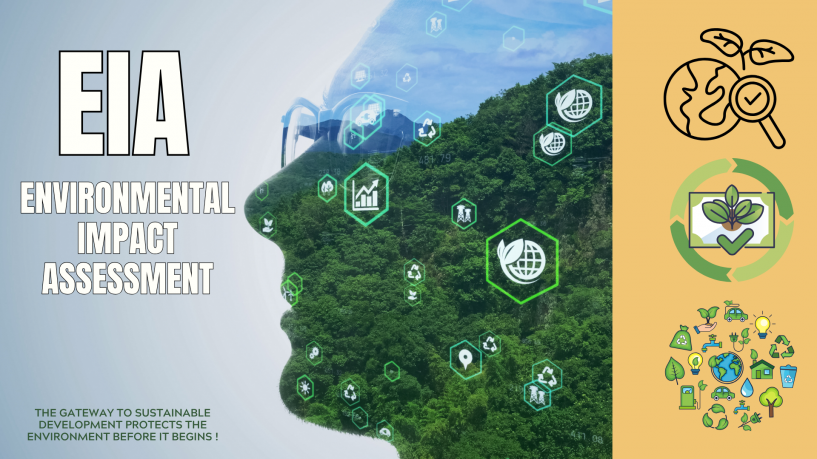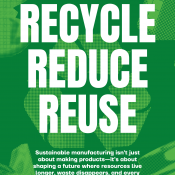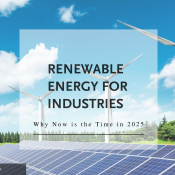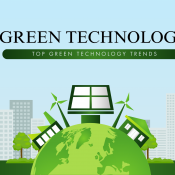The Importance of EIA (Environmental Impact Assessment)

Introduction
As our world continues to grow and industrialize, the need to balance development with environmental protection becomes increasingly important. From large factories and roads to power plants and housing projects, every development activity has some impact on the environment. But how do we know how harmful a project might be to our air, water, soil, or wildlife before it even starts?
That’s where Environmental Impact Assessment (EIA) comes in.
An EIA is like a health check-up for the environment before a project is approved. It helps identify possible negative impacts, suggests ways to reduce them, and ensures that decision-makers and the public are aware of the environmental consequences of a proposed activity.
In this blog, we’ll explore what EIA is, why it’s so important—especially in a country like Bangladesh, how it works, legal requirements, and how consulting firms like Green Future International are helping industries stay compliant and environmentally responsible.
What is Environmental Impact Assessment (EIA)?
An Environmental Impact Assessment (EIA) is a formal process used to evaluate the potential environmental effects of a proposed project before it begins. It takes into account both positive and negative impacts on:
- Air, water, and soil quality
- Wildlife and natural habitats
- Human health and local communities
- Cultural and historical sites
- Noise and waste generation
- Long-term sustainability
The purpose of an EIA is not to stop development but to make sure it happens safely, responsibly, and sustainably.
Why is EIA So Important?
1. Protects the Environment
The primary goal of EIA is to reduce environmental damage. It identifies possible issues like pollution, deforestation, or biodiversity loss and proposes solutions before any harm is done.
2. Promotes Sustainable Development
EIA ensures that economic development does not come at the cost of future generations. It promotes the use of resources in a balanced way that considers both growth and conservation.
3. Ensures Legal Compliance
In Bangladesh, EIA is a mandatory requirement under the Environment Conservation Act, 1995, and the updated Environment Conservation Rules, 2023. Projects that fall under Red and Orange categories must conduct an EIA or IEE and submit an Environmental Management Plan (EMP) to obtain an Environmental Clearance Certificate (ECC).
4. Encourages Public Participation
EIA involves consulting with the local community, stakeholders, and experts. It gives people a chance to voice concerns, suggest improvements, and be involved in the development decisions affecting their environment.
5. Saves Money and Reduces Risk
By identifying environmental risks early, businesses can avoid costly fines, legal troubles, and public opposition. It’s cheaper to prevent problems than fix them after they happen.
When is an EIA Required?
According to the Department of Environment (DoE) in Bangladesh, development projects are classified into four categories:
|
Category |
Requirement |
|
Green |
No EIA or IEE needed |
|
Yellow |
Initial Environmental Examination (IEE) |
|
Orange |
IEE (with some conditions) |
|
Red |
Full Environmental Impact Assessment (EIA) + EMP |
Projects under the Red category include:
- Large-scale garment industries
- Chemical plants
- Tanneries
- Power plants
- Shipbuilding and ship-breaking
- Cement factories
- Waste treatment facilities
- Roads and flyovers
For these projects, EIA is non-negotiable.
The EIA Process – Step by Step
Here is a simplified version of the EIA process followed in Bangladesh and globally:
1. Screening
Determine whether the project requires an EIA. In Bangladesh, the DoE provides this classification (Green, Orange, or Red).
2. Scoping
Identify what environmental aspects to focus on. For example, air pollution, groundwater contamination, noise levels, etc.
3. Baseline Study
Collect data about the current environmental conditions in the project area (air quality, water level, wildlife, land use, etc.).
4. Impact Prediction
Predict what will happen if the project goes ahead: Will air pollution rise? Will forests be cleared? Will communities be displaced?
5. Mitigation Measures
Recommend actions to reduce or control negative impacts. This could include planting trees, installing air filters, using renewable energy, etc.
6. Public Consultation
Engage local people and stakeholders to gather opinions and address their concerns.
7. EIA Report Preparation
Prepare a detailed report with findings, mitigation plans, and monitoring frameworks.
8. Review and Approval
Submit the report to the Department of Environment (DoE) for review. If approved, an Environmental Clearance Certificate (ECC) is issued.
What Does a Good EIA Report Include?
- Project description and justification
- Description of the existing environment
- Assessment of impacts
- Environmental Management Plan (EMP)
- Risk assessment
- Emergency preparedness plan
- Stakeholder feedback
- Monitoring plan and indicators
A professionally written EIA is both technical and easy to understand, helping decision-makers, communities, and regulators make informed choices.
Role of Environmental Firms in EIA
Firms like Green Future International offer professional EIA and IEE services that help industries:
- Identify environmental risks early
- Prepare reports that meet DoE standards
- Design effective mitigation strategies
- Obtain Environmental Clearance Certificate (ECC)
- Build reputation as a responsible, green company
We use modern tools like GIS mapping, air and water quality testing, ecological assessments, and socio-economic surveys to create reliable, data-driven EIA reports.
Common Sectors That Need EIAs in Bangladesh
- Textile and Garments
- Dyeing and washing processes pollute water heavily.
- Dyeing and washing processes pollute water heavily.
- Tanneries
- High chemical usage and heavy metal discharge.
- High chemical usage and heavy metal discharge.
- Pharmaceuticals
- Complex waste management required.
- Complex waste management required.
- Shipbreaking
- Major threats to coastal zones and worker safety.
- Major threats to coastal zones and worker safety.
- Real Estate and Construction
- Land degradation, noise, and dust pollution.
- Land degradation, noise, and dust pollution.
- Energy Projects (Gas, Coal, Solar)
- Air quality, noise, thermal pollution issues.
- Air quality, noise, thermal pollution issues.
- Transportation Infrastructure
- Roadways, ports, flyovers impact land and ecosystems.
- Roadways, ports, flyovers impact land and ecosystems.
The Environmental Clearance Certificate (ECC)
To begin construction or operation, a project must receive an ECC from the Department of Environment. Without it, a company cannot legally operate.
The ECC ensures that:
- The EIA was properly conducted
- Environmental safeguards are in place
- Mitigation measures are followed
- Monitoring will be ongoing
At Green Future Bangladesh, we help industries throughout the process—from documentation and submission to technical presentations and follow-ups with the DoE.
EIA Success Stories in Bangladesh
✅ Garment Factory in Gazipur
With proper EIA and wastewater treatment plans, this factory achieved compliance, improved worker health, and won buyer trust.
✅ Solar Energy Project in Rajshahi
An EIA helped identify migratory bird routes. The plant adjusted its location to avoid harm, gaining quick ECC approval.
✅ Food Processing Unit in Narayanganj
Identified groundwater contamination risks early. Switched to rainwater harvesting and filtration systems as a mitigation step.
Challenges in EIA Implementation
- Lack of awareness among new investors
- Delayed approval processes
- Poor quality or copied reports
- Resistance to public consultation
- Monitoring lapses after project starts
That’s why it’s crucial to work with experienced environmental consultants who understand the laws, technicalities, and real-world applications.
How EIA Helps Businesses
Many businesses fear EIA is just a “barrier” to fast development. But in reality, EIA:
- Builds trust with customers, investors, and regulators
- Prevents future lawsuits or shutdowns
- Improves safety and worker conditions
- Supports international certification (ISO, LEED, GOTS)
- Reduces long-term costs through efficiency and planning
EIA Is the Key to Sustainable Progress
Environmental Impact Assessment is not just a box to tick. It is a powerful tool to ensure that development happens with care, with science, and with responsibility.
As climate change, pollution, and resource scarcity rise, we must rethink how we build and grow. EIA offers a path forward that protects both the planet and our progress.
At Green Future International, we are committed to helping industries meet their goals without compromising the environment. Our mission is to promote awareness, responsibility, and real action—through proper EIA, EMP, and compliance services.
Published on: Sunday, 29 June 2025, 07:07 am ▪ Last update: Monday, 21 July 2025, 05:27 pm ▪ Total View of this Page: 408







